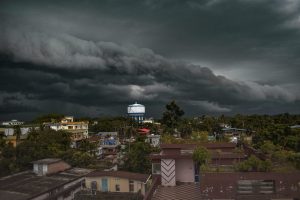Education for Sustainable Development Goals
The United Nations has declared 17 Sustainable Development Goals (SDGs) to be achieved by 2030, with the aim of creating a better and more sustainable future for all. These goals cover a wide range of issues such as poverty, hunger, climate change, gender equality, and education. While all 17 goals are interconnected, education plays a crucial role in achieving each of them. In this article, we will delve deeper into the role of education in achieving the Sustainable Development Goals, specifically focusing on Education for Sustainable Development Goals (ESDGs).
The Importance of Education for Sustainable Development Goals
Education is not just about acquiring knowledge and skills, it is also about creating awareness and instilling values in individuals. Through education, individuals can understand the interconnectedness of the world and the impact of their actions on the environment and society. It is this awareness that makes education an essential tool for achieving the SDGs, especially when it comes to sustainable development.
Education for Sustainable Development Goals, also known as Education for Sustainable Development (ESD), is a holistic approach to education that equips individuals with the knowledge, skills, values, and attitudes necessary to create a sustainable future. It goes beyond traditional subjects like math and science, and incorporates sustainable development concepts into the curriculum, teaching students how to live and think sustainably.
ESDGs and the SDGs
The ESDGs are integrated into the broader framework of the SDGs, and specifically focus on the fourth goal which is Quality Education. ESDGs aim to ensure that all learners acquire the knowledge, skills, and values necessary to create a more sustainable world. This means equipping students with the ability to think critically, problem solve, and make sustainable decisions.
Sustainability in the Curriculum
One key aspect of ESDGs is the integration of sustainability into the curriculum. This means that sustainability concepts are woven into various subjects such as science, geography, and social studies. For example, students may learn about climate change and its impact on the environment in science class, while also exploring solutions to address this issue.
This approach helps students understand how different subjects are interconnected and have a real-world impact. It also encourages them to think beyond their textbooks and understand the bigger picture when it comes to sustainable development.
Learning by Doing
ESDGs also emphasize the importance of experiential learning. This means providing opportunities for students to engage in hands-on activities that promote sustainable practices. For example, students may participate in a waste management project in their community, where they not only learn about the importance of proper waste disposal but also actively contribute to creating a more sustainable environment.
Experiential learning not only reinforces the concepts taught in the classroom but also instills a sense of responsibility and ownership in students, making them more likely to adopt sustainable practices in their daily lives.
The Role of Teachers in ESDGs
Teachers play a crucial role in ESDGs as they are responsible for imparting knowledge, values, and skills to students. They act as role models and advocates for sustainable development, and are essential in nurturing environmentally responsible citizens for the future.
Therefore, it is imperative for teachers to be well-trained in ESDGs, so that they can effectively incorporate sustainable development concepts into their teaching methods. Professional development programs and training workshops can help equip teachers with the necessary skills and knowledge to teach sustainable development effectively.
In Conclusion
Education for Sustainable Development Goals is crucial in achieving the broader SDGs. It equips individuals with the knowledge, skills, values, and attitudes necessary to create a sustainable future. By integrating sustainable development concepts into the curriculum and engaging students in hands-on activities, ESDGs not only create awareness but also inspire active participation in creating a better world for all. With the right education, we can all work together towards achieving the Sustainable Development Goals by 2030.










